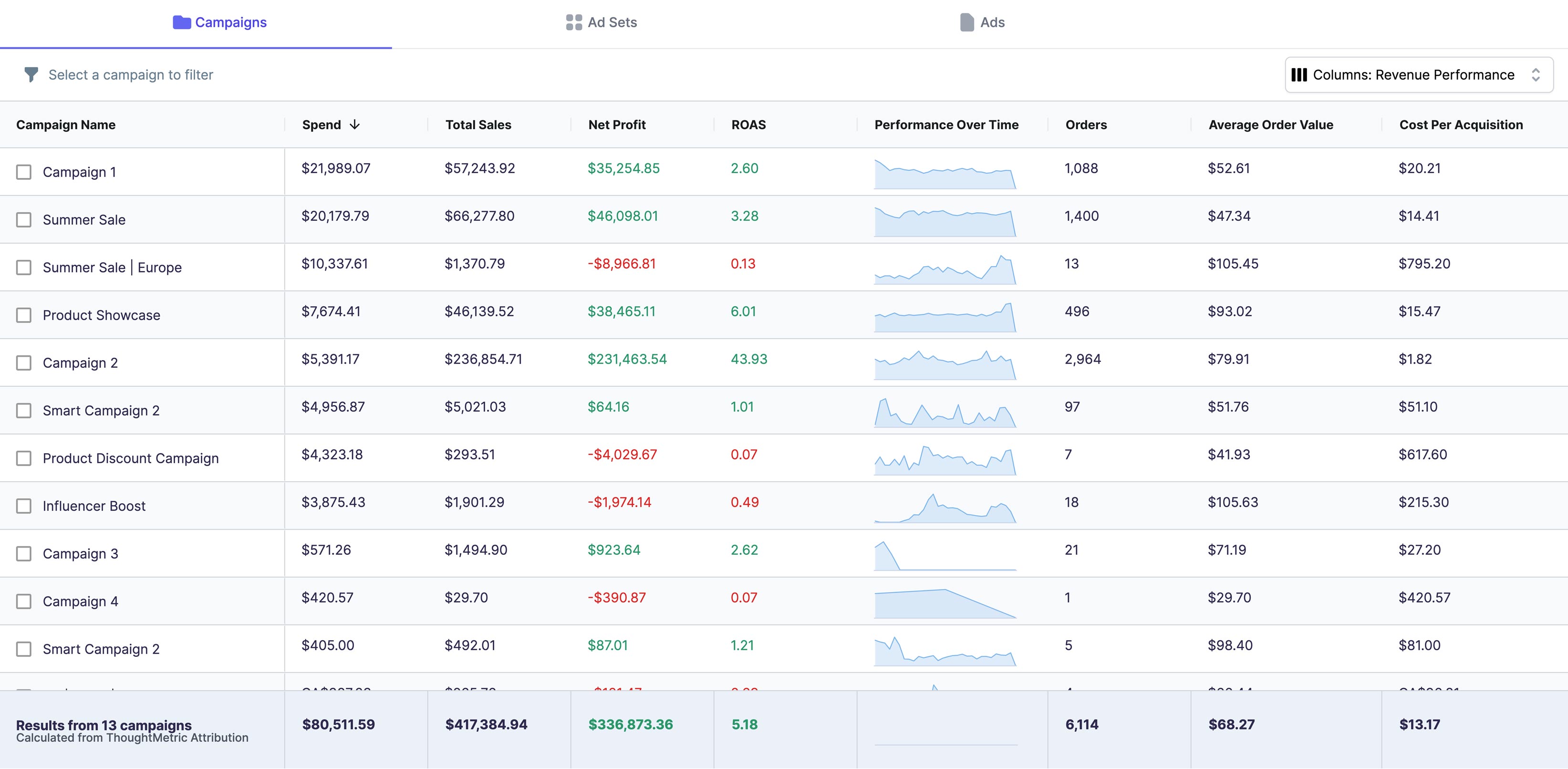Are you looking to optimize your Facebook ads to increase impressions? Understanding and tracking impressions is crucial to any Facebook ad campaign, as it measures how many times your ad was shown to potential customers. In this article, we will walk you through everything you need to know about calculating impressions in Facebook Ads Manager.
Understanding Impressions in Facebook Ads Manager
So, what exactly are impressions? In simple terms, impressions refer to the number of times your ad was shown to Facebook users. However, it is important to note that not all impressions are the same.
When it comes to Facebook Ads Manager, impressions are a crucial metric to track. They can give you valuable insights into the performance of your ad campaign and help you make data-driven decisions to improve your results.
Definition of Impressions
According to Facebook, an impression is counted when your ad is displayed on a user's screen. This means that the ad does not have to be clicked on or interacted with - just simply displayed. This is an important distinction to make, as it means that even if someone doesn't click on your ad, they still may have seen it and been exposed to your brand.
Furthermore, Facebook counts an impression each time your ad is shown, regardless of whether it was shown to the same user multiple times. This means that if your ad is shown 100 times to the same person, that will count as 100 impressions.
Types of Impressions
There are two types of impressions that Facebook tracks:
- Impressions
- Unique Impressions
The difference between the two is that "impressions" count each time an ad is displayed, even if it is to the same user multiple times. "Unique Impressions," on the other hand, only count each time the ad is displayed to a unique user. This metric can be particularly useful in understanding how many people your ad is reaching, rather than just how many times it is being shown.
Importance of Impressions in Ad Performance
Impressions are a key metric in measuring the success of your Facebook ad campaign. They can help you understand how much exposure your ads are getting and how many people are potentially interested in your product or service. By optimizing your ad targeting and creative, you can increase your ad's visibility and maximize your impressions.
However, it is important to note that impressions alone do not tell the whole story. While a high number of impressions can be a good sign, it doesn't necessarily mean that your ad is resonating with your target audience or driving conversions. That's why it's important to look at other metrics, such as click-through rate and conversion rate, to get a more complete picture of your ad's performance.
Overall, understanding impressions in Facebook Ads Manager is crucial to running successful ad campaigns. By tracking this metric and using it to make data-driven decisions, you can optimize your ads for maximum exposure and better results.
Setting up Your Facebook Ads Manager Account
Facebook has become a valuable platform for businesses to advertise their products and services. With over 2.8 billion monthly active users, Facebook is a great place to connect with potential customers. To start tracking impressions on Facebook, you will need to create a Facebook Ads Manager account.
Creating a Facebook Ads Manager account is a simple process that involves three key steps:
Step 1: Creating a Business Manager Account
The first step is to create a Business Manager account if you don't have one already. This is where you will manage all of your Facebook ad accounts and assets. By creating a Business Manager account, you can also manage access to your ad accounts and assets. This is especially useful if you have multiple people working on your ad campaigns.
To create a Business Manager account, simply visit business.facebook.com and follow the setup process. You will be prompted to enter your business details, including your business name, address, and phone number. Once you have completed the setup process, you will be able to access your Business Manager account.
Step 2: Navigating the Ads Manager Interface
Once you have a Business Manager account, you can access Ads Manager by clicking on the "Ads Manager" tab under your Business Manager settings. Here, you can create, manage and track your Facebook ad campaigns. Ads Manager is a user-friendly interface that allows you to create and manage your ad campaigns with ease.
The Ads Manager interface is divided into several sections, including Campaigns, Ad Sets, and Ads. In the Campaigns section, you can create and manage your ad campaigns. In the Ad Sets section, you can create and manage your ad sets, which are groups of ads that target specific audiences. In the Ads section, you can create and manage individual ads.
Step 3: Connecting Your Facebook Page and Ad Account
Before you can create an ad campaign, you'll need to connect your Facebook Page and Ad account. This step ensures that your ads are associated with your business and that you can track their performance accurately.
To connect your Facebook Page and Ad account, go to the Business Settings section of your Business Manager account. From there, click on the "Ad Accounts" tab and then click on "Add New Ad Account." Follow the prompts to connect your Facebook Page and Ad account. Once you have connected your Facebook Page and Ad account, you can start creating ad campaigns.
In conclusion, setting up a Facebook Ads Manager account is a crucial step in advertising on Facebook. By following the three key steps outlined above, you can create and manage your ad campaigns with ease. With Facebook's vast user base, advertising on the platform can help your business reach new customers and grow.
Creating a Facebook Ad Campaign
Now that your Ads Manager is set up, you can begin creating your Facebook ad campaign. There are several key steps involved in this process:
Choosing Your Campaign Objective
The first step is to choose your campaign objective. This objective will determine the type of ad you're creating and the purpose of the campaign.
Setting Your Target Audience
Next, you'll need to set your target audience. This includes factors like age, gender, location and interests. By targeting the right audience, you can ensure that your ad is being displayed to users who are interested in your product or service.
Designing Your Ad Creative
Finally, you'll need to design your ad creative. This includes writing ad copy and selecting images or videos that will be displayed in the ad. It's important to create ad creative that is eye-catching and relevant to your target audience, as this will increase your chances of getting clicks and driving conversions.
Analyzing Impressions in Facebook Ads Manager
Once your ad campaign is live, it's important to keep track of your impressions to ensure that your ads are performing well. Here's how you can do this:
Locating the Impressions Metric
The impressions metric can be found in the "Performance" tab of your Ads Manager. This will show you the total number of impressions your ad has received so far.
Interpreting Impressions Data
An important thing to note about impressions data is that it can be skewed by various factors, such as ad frequency and ad placement. High impressions may not necessarily mean high engagement or conversions, so it's important to look at other metrics like click-through rates and conversion rates to get a full picture of your ad's performance.
Comparing Impressions to Other Metrics
It's also helpful to compare your impressions metrics to other key metrics, such as cost per click and click-through rate, to determine the overall effectiveness of your ad campaign. By monitoring these metrics over time and making adjustments to your targeting and creative, you can optimize your campaigns for better results.
Conclusion
Calculating impressions in Facebook Ads Manager is essential to measuring the success of your ad campaigns. By understanding what impressions are, setting up your Ads Manager account and tracking your metrics over time, you can optimize your campaigns for maximum visibility and engagement. Remember to look beyond impressions alone and consider other key metrics to get a full picture of your ad campaign's performance.





